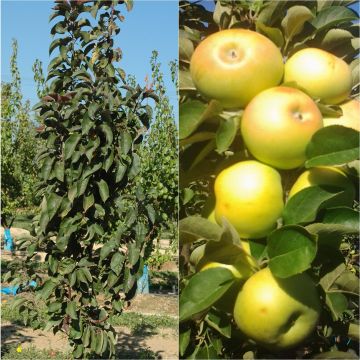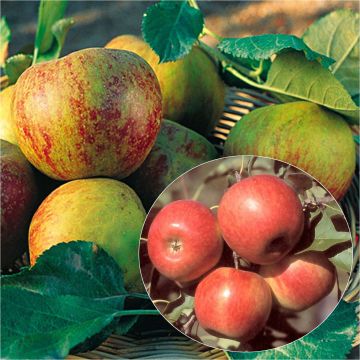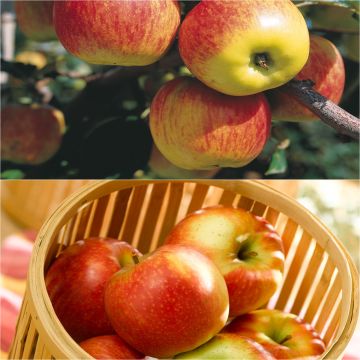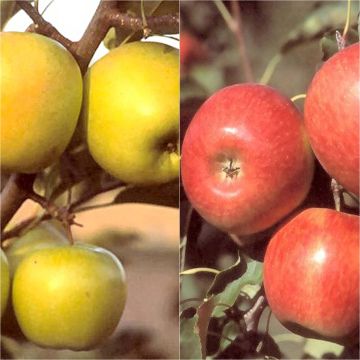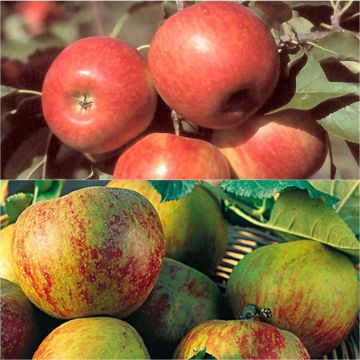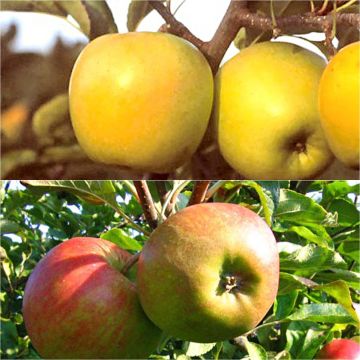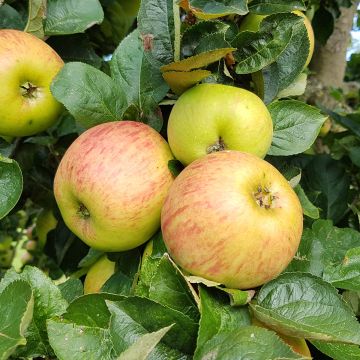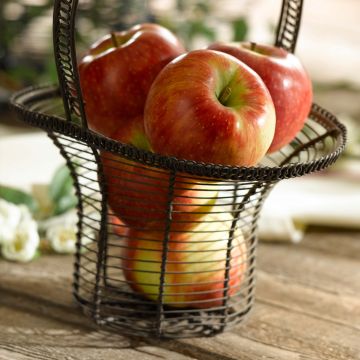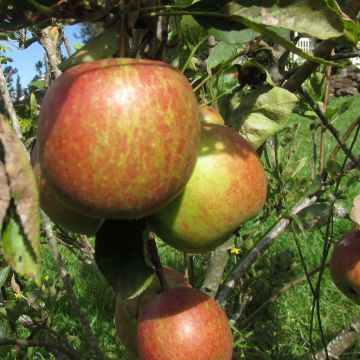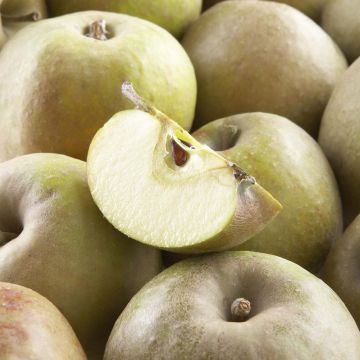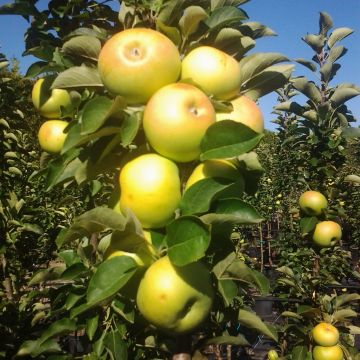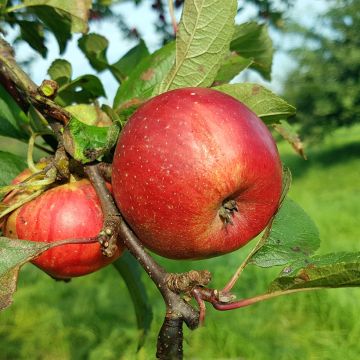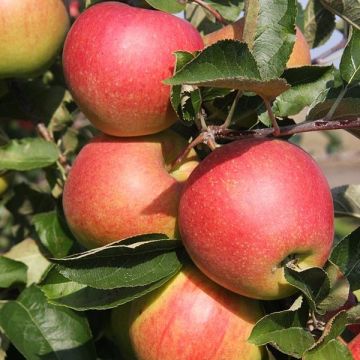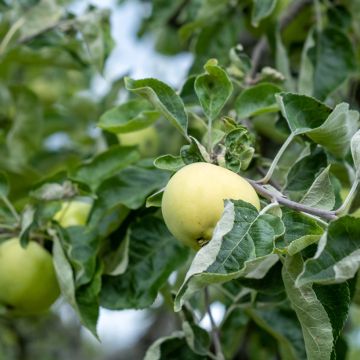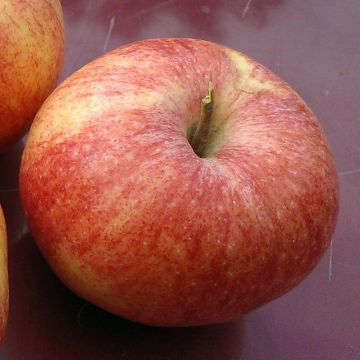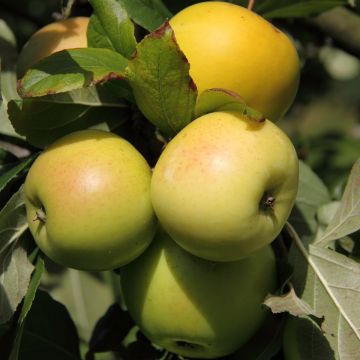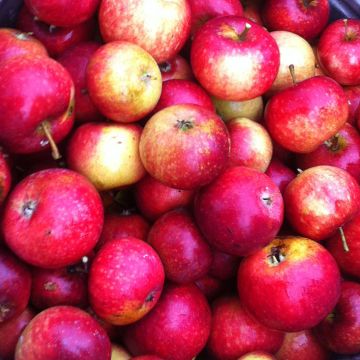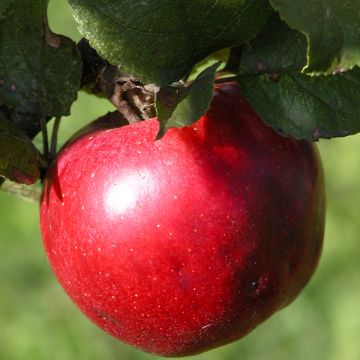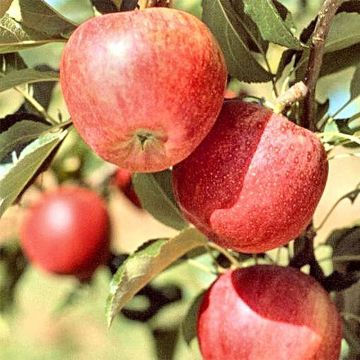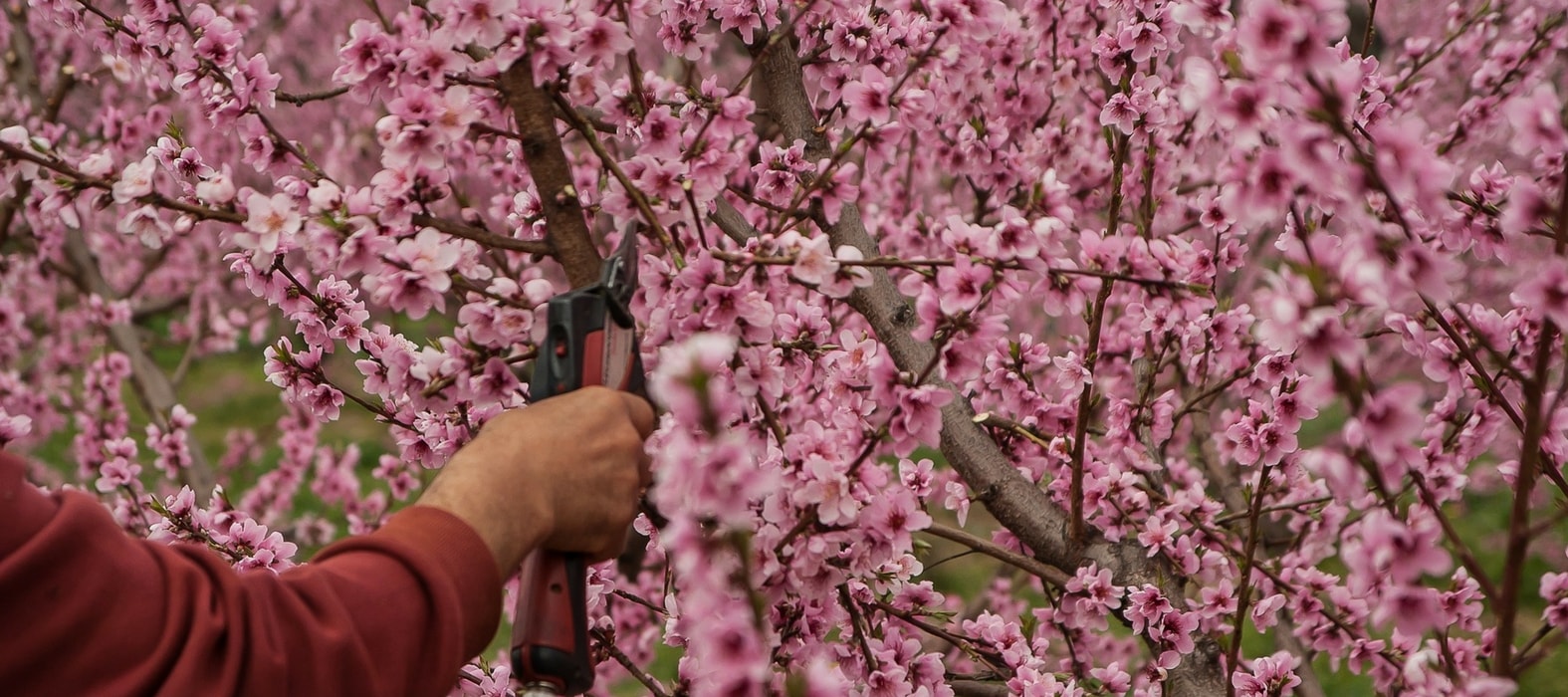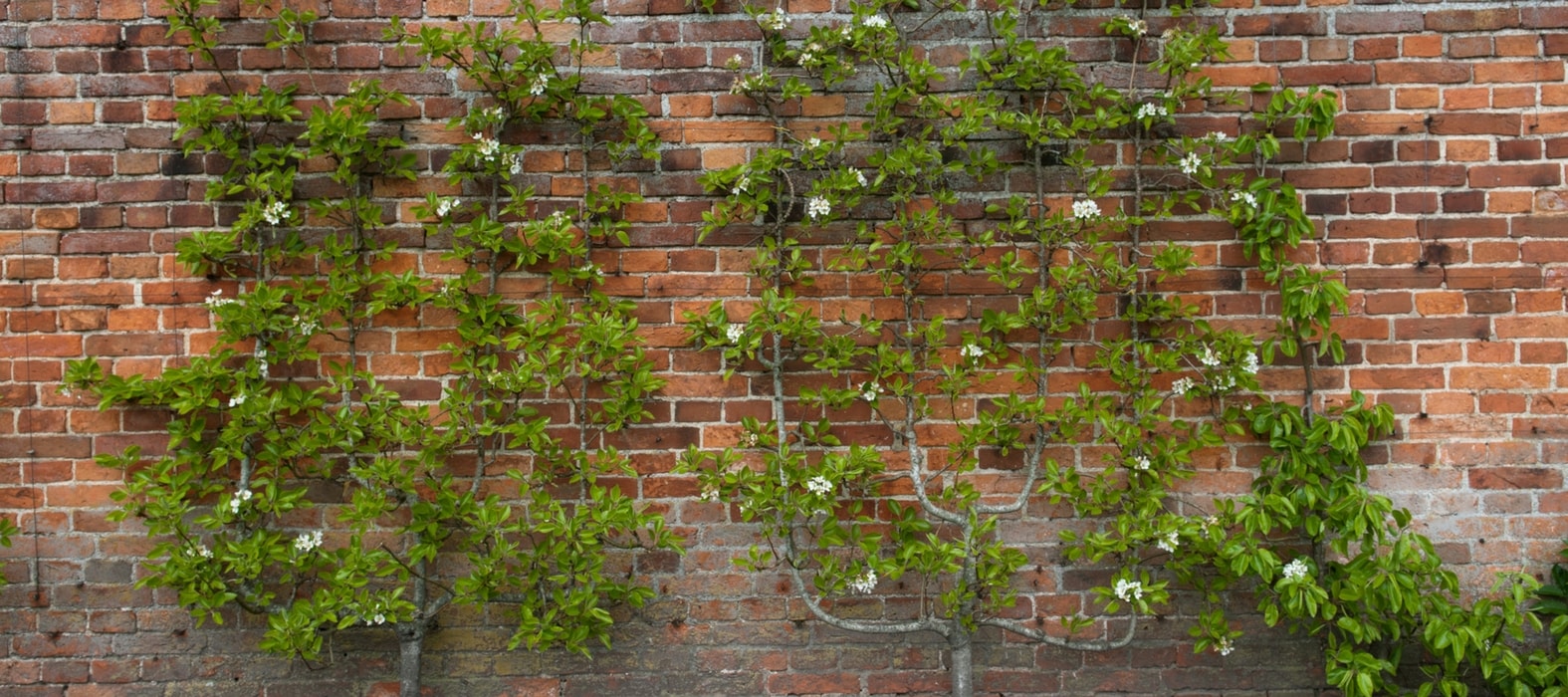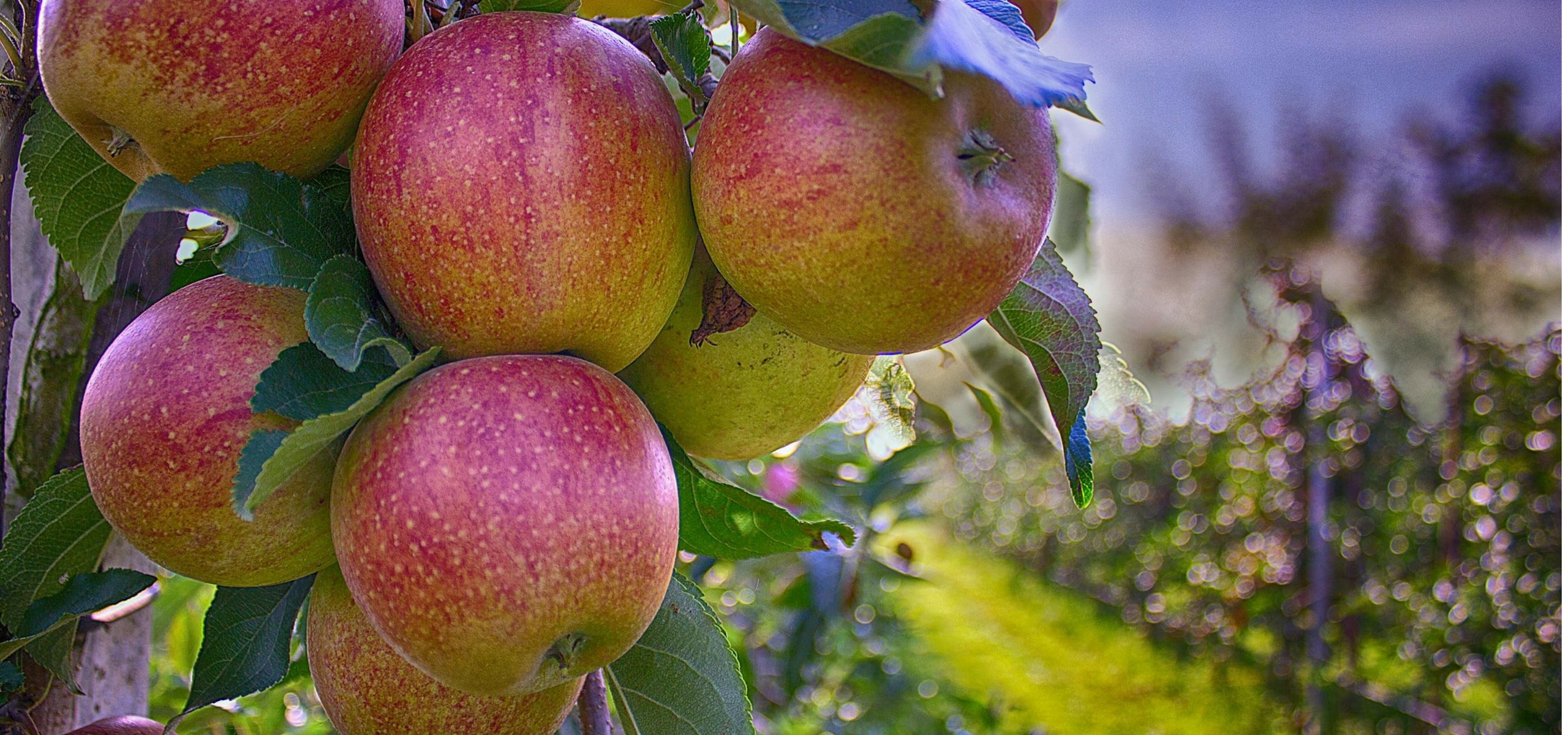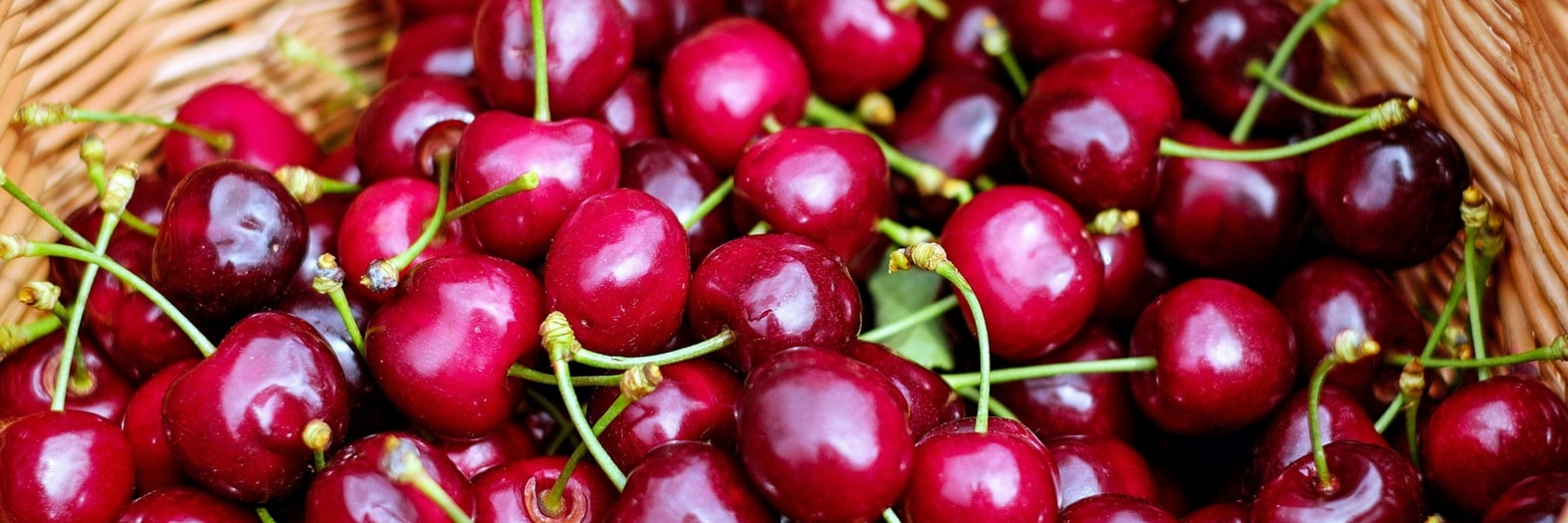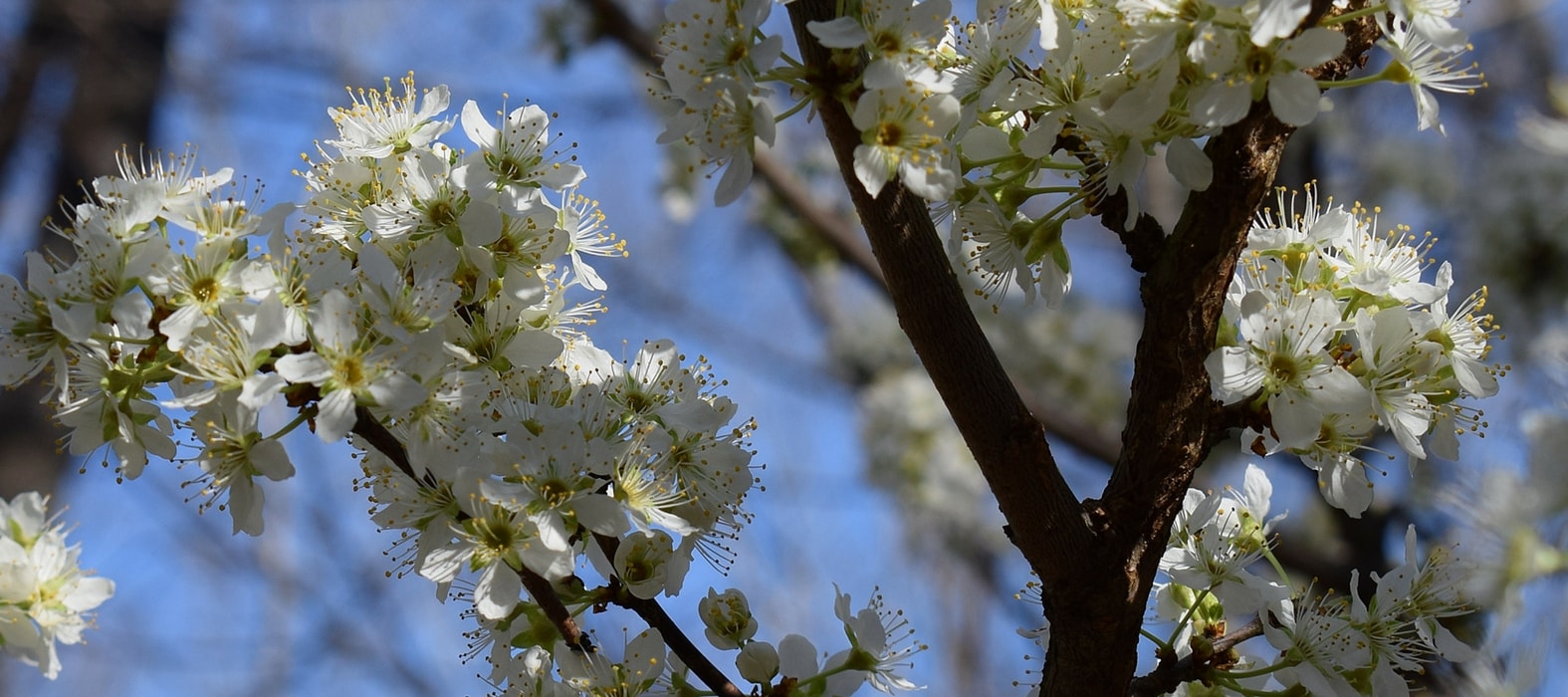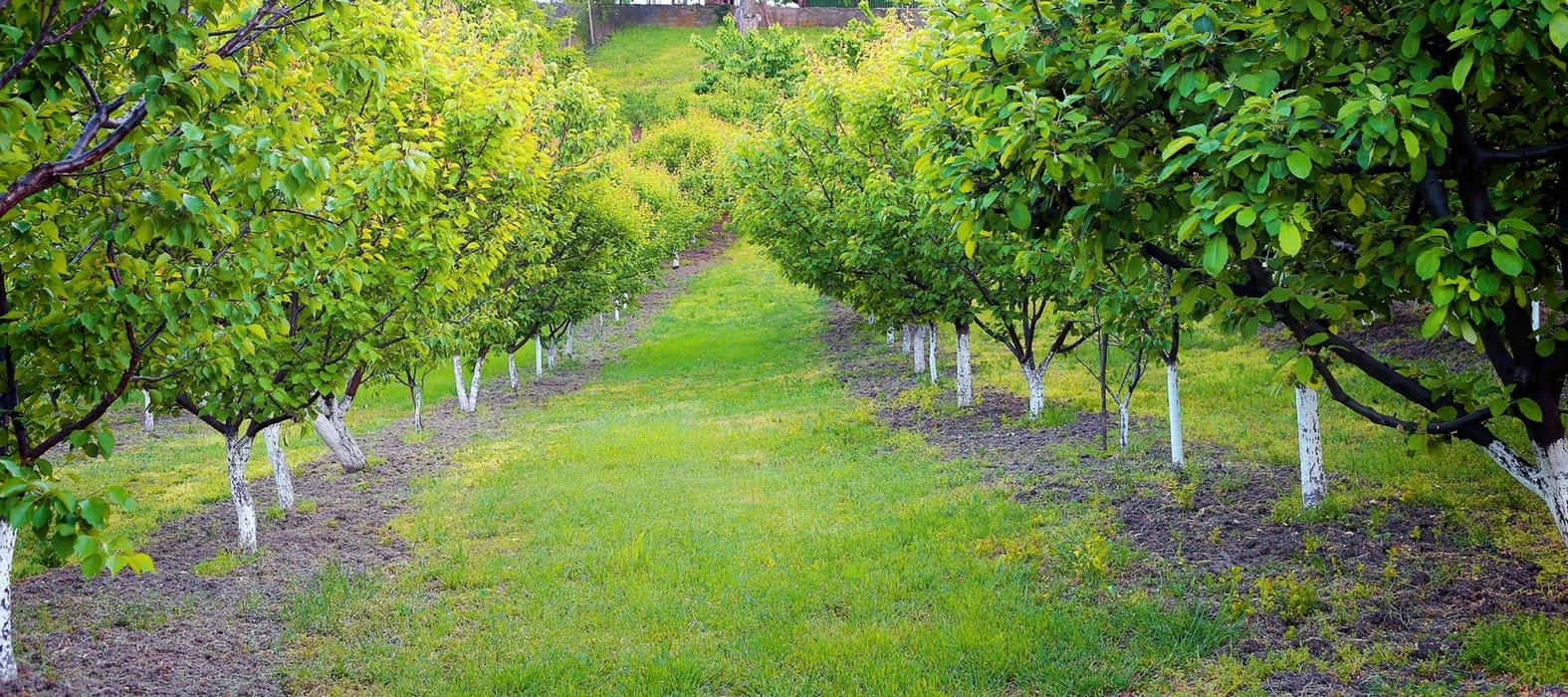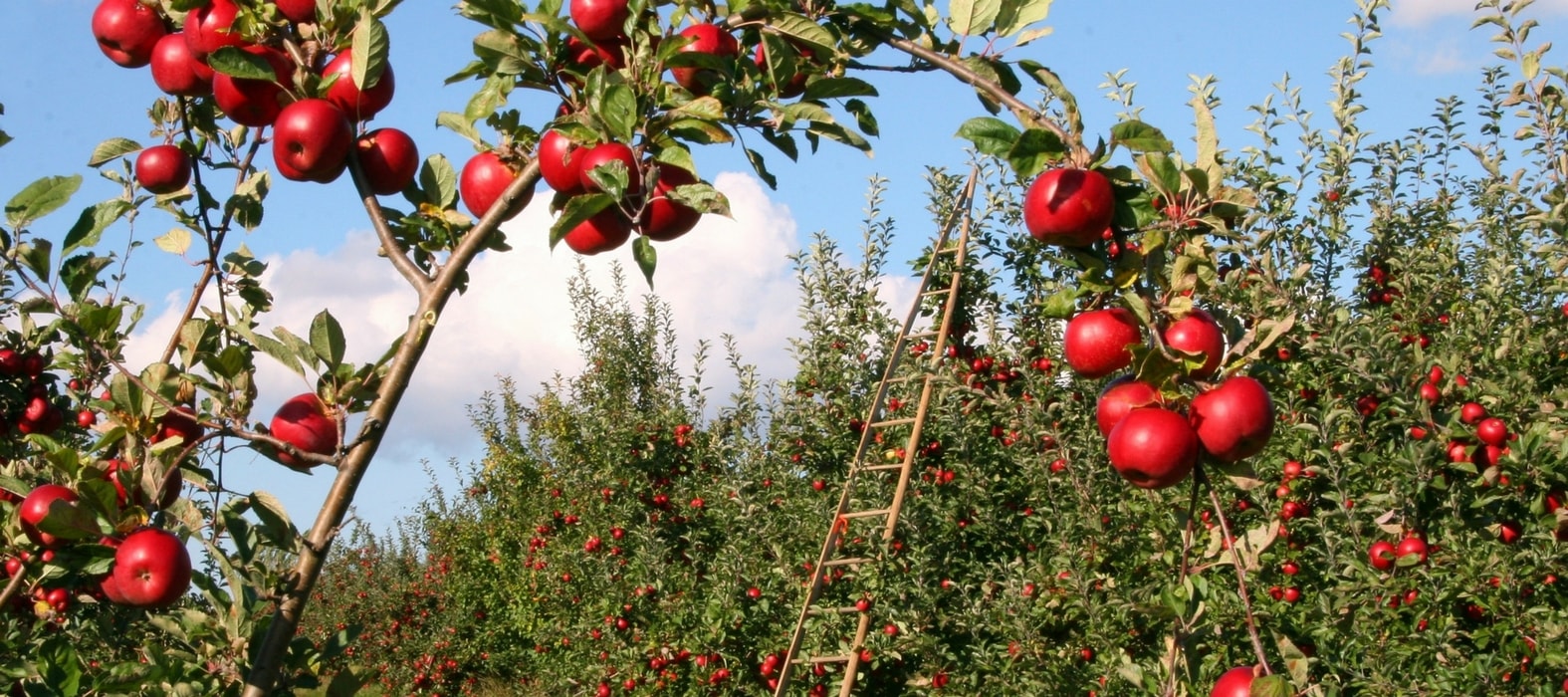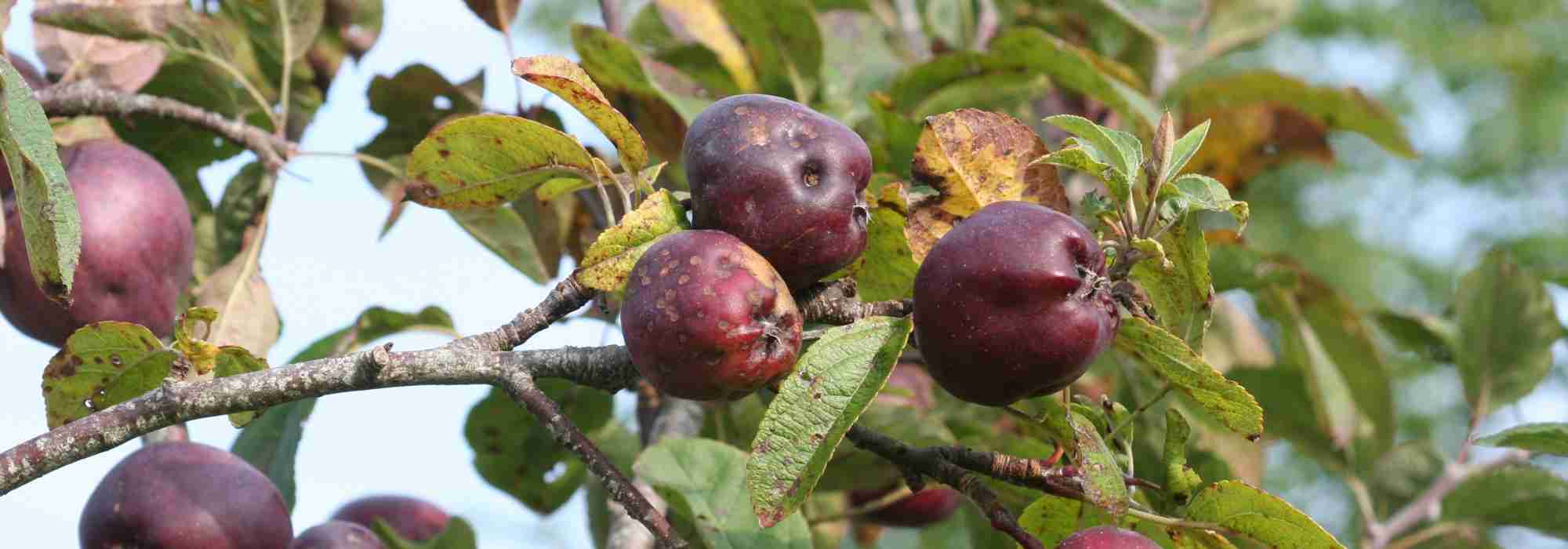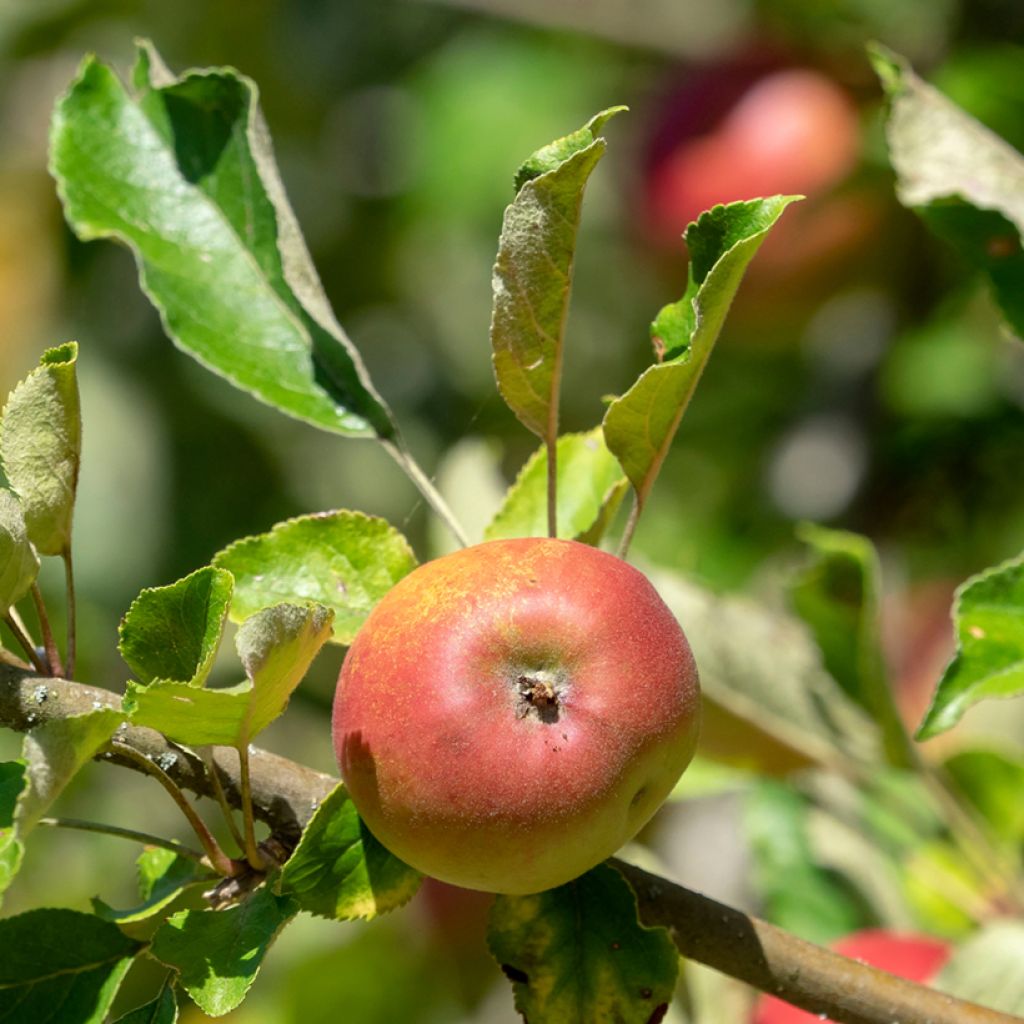

Apple Tree Reneta Landsberska - Malus domestica
Apple Tree Reneta Landsberska - Malus domestica
Malus domestica Reneta Landsberska
Apple
Special offer!
Receive a €20 voucher for any order over €90 (excluding delivery costs, credit notes, and plastic-free options)!
1- Add your favorite plants to your cart.
2- Once you have reached €90, confirm your order (you can even choose the delivery date!).
3- As soon as your order is shipped, you will receive an email containing your voucher code, valid for 3 months (90 days).
Your voucher is unique and can only be used once, for any order with a minimum value of €20, excluding delivery costs.
Can be combined with other current offers, non-divisible and non-refundable.
Why not try an alternative variety in stock?
View all →This plant carries a 6 months recovery warranty
More information
We guarantee the quality of our plants for a full growing cycle, and will replace at our expense any plant that fails to recover under normal climatic and planting conditions.
Description
The 'Reneta Landsberska' apple tree also known as 'Renette de Landsberg' is a hardy, ancient German variety valued for its ability to produce abundant and regular harvests, even in colder climates or at higher altitudes. It is particularly well-suited to family orchards, especially in regions with harsh winters. The presence of a pollinator variety is essential for good harvests.
The (Malus domestica) 'Reneta Landsberska' apple tree also known as Landsberger Reinette, Renette de Landsberg, Reneta Gorzowska, or Renet landsbergskii, is an ancient variety originating from Germany, developed around 1840 in the Landsberg an der Warthe region. The 'Reneta Landsberska' apple tree is characterised by vigorous growth and a fairly broad structure. It can reach a height of 4 to 5 metres. Its medium to large apples have a yellow to yellow-green skin sometimes slightly tinged with red on the sun-exposed side. They have a firm, juicy, and aromatic flesh offering a balanced flavour between sweet and tangy. The apples of this variety are harvested from late September but they store well for several months, allowing them to be used throughout winter. The apples should be stored in a cool, dry, and dark place at a temperature of 8 to 10°C, or in cold storage between 1 and 3°C.
The apples from the 'Reneta Landsberska' apple tree can be eaten raw, juiced, or used for drying. They are also suitable for making compotes and pastries.
Although this apple tree is relatively low-maintenance, it prefers deep, well-drained soil and a sunny position to optimise fruit production. It is not particularly susceptible to common apple diseases such as scab, but regular monitoring is necessary to prevent pest infestations like aphids. Light pruning is recommended in late winter to ensure good ventilation and stimulate fruit production for the following season. The 'Reneta Landsberska' apple tree is not self-fertile and requires pollinator varieties such as 'Golden Delicious', 'James Grieve', 'Jonathan', 'Alkmene', 'Cox Orange Pippin', or 'Antonovka' varieties to fruit well.
Easy to consume, apples provide a significant satiating effect. A source of energy, they are rich in carbohydrates and fructose, helping to revitalise the body. Thanks to their vitamins A, B, C, and E, minerals, antioxidants, and fibre, they are a true health ally. Apples release ethene, a gas that accelerates the ripening of fruits, useful for speeding up the ripening of other fruits or vegetables. Highly prized for their fruits, apple trees are a classic in edible produce gardens. With a wide selection of apple tree varieties, it is easy to find one that will suit your preferences.
Plant habit
Fruit
Flowering
Foliage
Botanical data
Malus
domestica
Reneta Landsberska
Rosaceae
Apple
Malus domestica Landsberger Reinette, Renette de Landsberg, Reneta Gorzowska, Renet landsbergskii, Reneta Landsbergera
Cultivar or hybrid
Other Apple trees
View all →Planting and care
Choose a sunny spot for your 'Reneta Landsberska' Apple Tree. The soil can be slightly chalky or acidic, but not excessively so. Dig a wide planting hole at least 3 times the volume of the root ball. Simultaneously add organic matter (compost, potting mix...) and a base fertiliser like ground horn. Do not bury the graft junction. Stake if necessary. For apple trees planted in isolation and exposed to wind, it may be beneficial to stake them using a guy-wire system: plant 3 stakes in a triangle 50 cm around the trunk, join them with pieces of wood. Protect the bark with a piece of rubber, for example, and attach the stakes to the trunk with metal wires. Water generously, even in winter, even if it rains. Fruit trees are ideally planted between October and March, outside frost periods. Container-grown plants can be planted all year round except during extreme heat or frost.
In winter, you can add a small shovel of wood ash rich in potash at the base of the tree and lightly work this into the soil surface, to improve fruiting. Apple trees can be susceptible to various diseases and pests. To minimise risks, space trees sufficiently, plant mixed-species hedges, set up nest boxes or insect shelters to attract beneficial wildlife. In short: prioritise diversity. The main diseases affecting apple trees are scab (brown spots on leaves), brown rot (withering of flowers and fruit rot on the tree) and powdery mildew (white felting on leaves). For these three cases, preventive action is preferable by spraying a horsetail decoction; as a last resort during severe attacks, a curative treatment with a Bordeaux mixture can be applied. Regarding pests, the codling moth (or fruit worm), a small caterpillar from butterfly eggs, burrows inside the fruit. To remedy this, preventive action is best by encouraging blue tits and bats with nest boxes. For aphid infestations, spray a solution of tar soap.
During harvesting in September-October, only keep picked (not fallen) apples. For optimal storage, place them with their pedunculate end downwards in crates or trays. Choose a preferably completely dark, dry, and cool storage area, but frost-free.
Planting period
Intended location
Care
Planting & care advice
This item has not been reviewed yet - be the first to leave a review about it.
Haven't found what you were looking for?
Hardiness is the lowest winter temperature a plant can endure without suffering serious damage or even dying. However, hardiness is affected by location (a sheltered area, such as a patio), protection (winter cover) and soil type (hardiness is improved by well-drained soil).

Photo Sharing Terms & Conditions
In order to encourage gardeners to interact and share their experiences, Promesse de fleurs offers various media enabling content to be uploaded onto its Site - in particular via the ‘Photo sharing’ module.
The User agrees to refrain from:
- Posting any content that is illegal, prejudicial, insulting, racist, inciteful to hatred, revisionist, contrary to public decency, that infringes on privacy or on the privacy rights of third parties, in particular the publicity rights of persons and goods, intellectual property rights, or the right to privacy.
- Submitting content on behalf of a third party;
- Impersonate the identity of a third party and/or publish any personal information about a third party;
In general, the User undertakes to refrain from any unethical behaviour.
All Content (in particular text, comments, files, images, photos, videos, creative works, etc.), which may be subject to property or intellectual property rights, image or other private rights, shall remain the property of the User, subject to the limited rights granted by the terms of the licence granted by Promesse de fleurs as stated below. Users are at liberty to publish or not to publish such Content on the Site, notably via the ‘Photo Sharing’ facility, and accept that this Content shall be made public and freely accessible, notably on the Internet.
Users further acknowledge, undertake to have ,and guarantee that they hold all necessary rights and permissions to publish such material on the Site, in particular with regard to the legislation in force pertaining to any privacy, property, intellectual property, image, or contractual rights, or rights of any other nature. By publishing such Content on the Site, Users acknowledge accepting full liability as publishers of the Content within the meaning of the law, and grant Promesse de fleurs, free of charge, an inclusive, worldwide licence for the said Content for the entire duration of its publication, including all reproduction, representation, up/downloading, displaying, performing, transmission, and storage rights.
Users also grant permission for their name to be linked to the Content and accept that this link may not always be made available.
By engaging in posting material, Users consent to their Content becoming automatically accessible on the Internet, in particular on other sites and/or blogs and/or web pages of the Promesse de fleurs site, including in particular social pages and the Promesse de fleurs catalogue.
Users may secure the removal of entrusted content free of charge by issuing a simple request via our contact form.
The flowering period indicated on our website applies to countries and regions located in USDA zone 8 (France, the United Kingdom, Ireland, the Netherlands, etc.)
It will vary according to where you live:
- In zones 9 to 10 (Italy, Spain, Greece, etc.), flowering will occur about 2 to 4 weeks earlier.
- In zones 6 to 7 (Germany, Poland, Slovenia, and lower mountainous regions), flowering will be delayed by 2 to 3 weeks.
- In zone 5 (Central Europe, Scandinavia), blooming will be delayed by 3 to 5 weeks.
In temperate climates, pruning of spring-flowering shrubs (forsythia, spireas, etc.) should be done just after flowering.
Pruning of summer-flowering shrubs (Indian Lilac, Perovskia, etc.) can be done in winter or spring.
In cold regions as well as with frost-sensitive plants, avoid pruning too early when severe frosts may still occur.
The planting period indicated on our website applies to countries and regions located in USDA zone 8 (France, United Kingdom, Ireland, Netherlands).
It will vary according to where you live:
- In Mediterranean zones (Marseille, Madrid, Milan, etc.), autumn and winter are the best planting periods.
- In continental zones (Strasbourg, Munich, Vienna, etc.), delay planting by 2 to 3 weeks in spring and bring it forward by 2 to 4 weeks in autumn.
- In mountainous regions (the Alps, Pyrenees, Carpathians, etc.), it is best to plant in late spring (May-June) or late summer (August-September).
The harvesting period indicated on our website applies to countries and regions in USDA zone 8 (France, England, Ireland, the Netherlands).
In colder areas (Scandinavia, Poland, Austria...) fruit and vegetable harvests are likely to be delayed by 3-4 weeks.
In warmer areas (Italy, Spain, Greece, etc.), harvesting will probably take place earlier, depending on weather conditions.
The sowing periods indicated on our website apply to countries and regions within USDA Zone 8 (France, UK, Ireland, Netherlands).
In colder areas (Scandinavia, Poland, Austria...), delay any outdoor sowing by 3-4 weeks, or sow under glass.
In warmer climes (Italy, Spain, Greece, etc.), bring outdoor sowing forward by a few weeks.






























